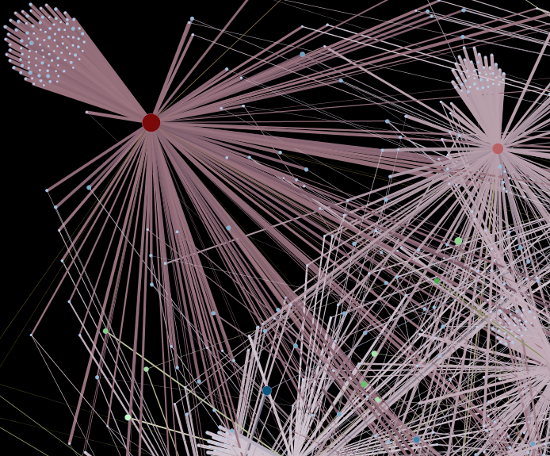
The documentation, representation and analysis of academic networks has a
long tradition with, for instance, citation
networks having been well-examined. Even here at Stanford, the focus on studying academic collaboration, interdisciplinarity, citation and "the dynamics of knowledge creation" by projects like the Knowledge Creation Lab have led to research and interactive software like the Dissertation Browser, which allows for an exploration of the topic networks formed out of the texts of various dissertations. In my own experience, however, describing the Wild
West of Digital Humanities projects, groups, institutes, centers,
collaboraties and informal teams is not so easy as downloading and
reconciling authors and citations from a friendly and metadata rich
on-line journal or aggregator, nor is it deeply embedded enough in network theory to easily sidestep the practical concerns that it evokes. Describing the projects
and participants in the Digital Humanities at Stanford using semantic
links has produced enormously interesting, as well as enormously
problematic, results.
Recent comments
2 years 29 weeks ago
2 years 44 weeks ago
2 years 44 weeks ago
2 years 50 weeks ago
3 years 4 weeks ago
3 years 4 weeks ago
3 years 4 weeks ago
3 years 6 weeks ago
3 years 6 weeks ago
3 years 6 weeks ago